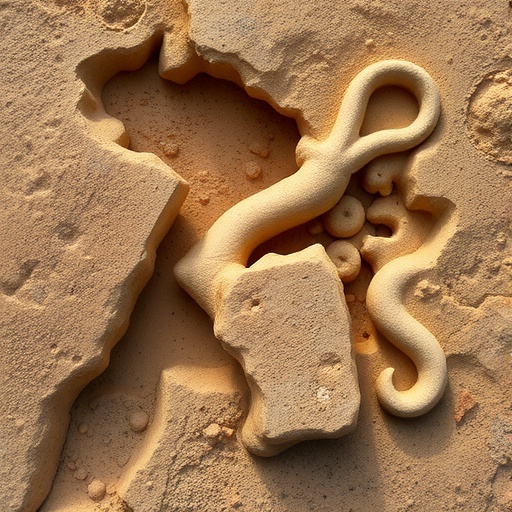In a groundbreaking study that intertwines archaeology, genetics, and climate resilience, researchers from Linköping University in Sweden and the University of Las Palmas de Gran Canaria in Spain have unveiled a nearly two-thousand-year history of lentil cultivation in the Canary Islands. Employing cutting-edge ancient DNA analysis techniques, this research reveals how lentils, a staple legume, have been not only sustained but also genetically adapted by human cultures on these volcanic islands, surviving through climatic challenges and societal transformations.
The Canary Islands, located off the northwest coast of Africa, have seen human presence for more than a millennium before European contact in the 14th century. This study presents the first comprehensive genetic analysis of archaeological lentils recovered from ancient grain silos carved into volcanic bedrock on the island of Gran Canaria. These silos, inaccessible and preserved within arid conditions, offered a unique preservation environment, allowing DNA to remain intact in seeds dating back over a thousand years. Such preservation is rare and provides a direct genetic link between ancestral crops and their modern descendants.
By sequencing ancient DNA extracted from these archaeological lentils, the research team compared it with DNA from lentils currently grown across various islands in the Canaries, parts of Spain, and Morocco. The findings confirm that the lentils cultivated today share genetic continuity with those brought by indigenous peoples from North Africa around the second century CE. This suggests that human-mediated domestication and crop dissemination coincided with early island colonization processes. The sustained cultivation of this particular lentil variety underlines a sophisticated adaptation strategy to local environmental constraints.
One of the remarkable outcomes of the study is the evidence showing that the same type of lentils present almost two millennia ago continues to be grown on the islands. This persistence is especially significant given the demographic upheavals following European colonization when indigenous populations sharply declined. However, the agricultural practices and crops appear to have been adopted by subsequent settlers, epitomizing a cultural transmission of agricultural knowledge and genetic resources despite colonial disruptions.
The researchers propose two main factors for the long-term survival of these lentils. First, the intrinsic adaptation of these varieties to the hot, arid Canary Islands climate likely provided a selective advantage, favoring their resilience through centuries of environmental variability. Second, socio-cultural dynamics may have played a pivotal role. Oral traditions, particularly among indigenous and later islander women, who maintained specialized botanical knowledge, may have been critical in preserving cultivation practices and seed stock. This gendered knowledge transmission underscores the complex intertwining of human culture and crop domestication.
Beyond historical interest, the study has significant implications for contemporary agriculture and climate change adaptation. Lentils cultivated in the Canaries have uniquely adapted to withstand dry and warm conditions, traits increasingly essential under current global climate stressors. Preserving and characterizing the genetic diversity of lentils from various Canary Islands is therefore vital. These genetic resources could provide blueprints for breeding programs aiming to enhance drought tolerance and climate resilience in legume crops worldwide.
Intriguingly, the study also disentangles the cultural and genetic background of the so-called “Lenteja tipo Lanzarote” lentils, a term commonly seen on Spanish market shelves. Contrary to assumptions about their origin, these lentils are not grown on the island of Lanzarote itself but are associated with quality and tradition. Through genetic comparisons, researchers detected evidence of crossbreeding between lentils from Lanzarote and those on the Spanish mainland, indicating ongoing gene flow and regional crop exchanges that have shaped modern lentil populations.
This research exemplifies how ancient DNA studies can illuminate not only the biological evolution of crops but also complex human-plant interactions. The ability to trace lineage, migration, and cultivation strategies over nearly two millennia opens new avenues for understanding agricultural heritage and its conservation. The study harnessed advanced genomic sequencing technologies and bioinformatics, utilizing Sweden’s National Academic Infrastructure for Supercomputers (NAISS) to analyze extensive genetic datasets, reflecting the growing integration of computational biology in archaeological research.
Furthermore, the study reiterates the importance of indigenous and local knowledge systems in fostering biodiversity and sustainability. It highlights how cultural practices can influence plant evolution, seed selection, and agricultural resilience over centuries. These insights advocate for inclusive approaches in agricultural development, recognizing that heritage crops and traditional knowledge are critical elements to address future food security challenges.
The combination of archaeological context, cutting-edge genetic analysis, and ethnobotanical perspectives in this study offers a comprehensive view of lentil cultivation’s past, present, and future in the Canary Islands. As global agriculture faces challenges from climate change, studies like this underscore the urgency of conserving genetic diversity and revitalizing ancient crops with proven environmental adaptability.
The full findings are published in the Journal of Archaeological Science, titled “Ancient DNA from lentils (Lens culinaris) illuminates human – plant – culture interactions in the Canary Islands.” The research was supported by the European Research Council and the Spanish Ministry of Science, Innovation, and Universities, emphasizing international collaboration at the forefront of archaeological science.
This study not only redefines the history of lentil cultivation but also bridges past agricultural wisdom with modern scientific efforts to create resilient and sustainable food systems worldwide. With lentils being one of the world’s most important legume crops, this research opens promising pathways for breeding climate-adapted varieties and appreciating the intertwined legacy of human societies and their staple plants.
Subject of Research: Ancient DNA analysis of archaeological lentils (Lens culinaris) to trace human-plant interactions and crop evolution in the Canary Islands
Article Title: Ancient DNA from lentils (Lens culinaris) illuminates human – plant – culture interactions in the Canary Islands
News Publication Date: 12-Sep-2025
Web References: http://dx.doi.org/10.1016/j.jas.2025.106360
Image Credits: Charlotte Perhammar/Linköping University
Keywords: Ancient DNA, lentils, Canary Islands, archaeology, crop genetics, climate adaptation, agricultural history, plant breeding, genetic diversity, human-plant interaction, Lens culinaris, drought tolerance




